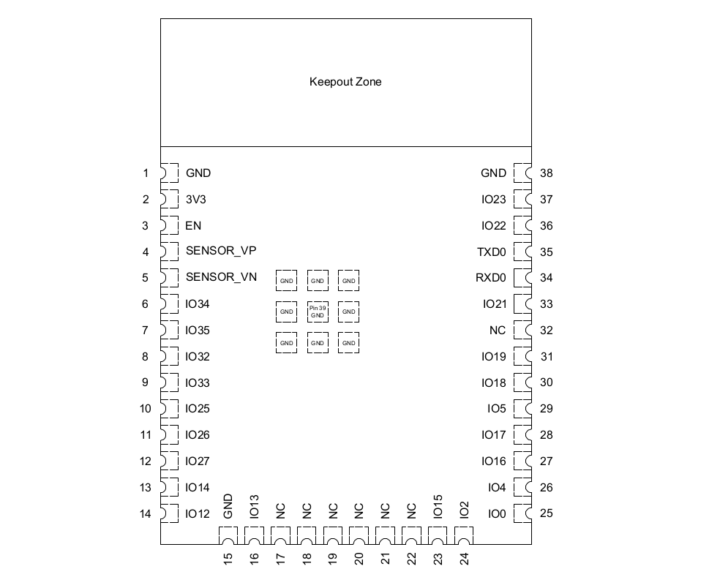Espressif Systems ESP32-WROOM-DA is another ESP32 based WiFI & BLE module with a twist as its dual PCB antenna design aims to provides a longer range and more reliable connectivity by automatically switching to a specific PCB antenna depending on signal strength.
The new module features ESP32-D0WD-V3 dual-core Xtensa LX6 dual-core processor with a maximum frequency of 240 MHz, along with 520 KB of SRAM and 448 KB of ROM, and has been designed to be pin-to-pin compatible with ESP32-WROOM-32E module found in products such as Pico Wireless, in order to ease migration between the two modules.

- WiSoC – Espressif Systems ESP32-D0WD-V3 embedded, Xtensa dual-core 32-bit LX6 microprocessor, up to 240 MHz with 448 KB ROM for booting and core functions, 520 KB SRAM for data and instructions, 16 KB SRAM in RTC
- Storage – 4MB SPI flash
- Connectivity
- WiFi
- 802.11b/g/n up to 150 Mbps
- A-MPDU and A-MSDU aggregation
- 0.4 µs guard interval support
- Center frequency range of operating channel – 2412 ~ 2484 MHz
- Bluetooth
- Bluetooth V4.2 BR/EDR and Bluetooth LE specification
- Class-1, class-2 and class-3 transmitter
- AFH
- CVSD and SBC
- Dual PCB antenna
- WiFi
- Interfaces via 38 castellated holes
- Storage – SD card
- UART, SPI, SDIO, I2C, LED
- PWM, Motor PWM, I2S, IR, pulse counter, GPIO,
- Capacitive touch sensor, ADC, DAC, Two-Wire
Automotive Interface (TWAI, compatible with ISO11898-1)
- Misc – 40 MHz crystal oscillator
- Operating voltage/Power supply: 3.0 ~ 3.6 V
- Dimensions – 19.3 x 18 mm excluding the area with the two antennas
- Operating temperature range – –40 ~ 85 °C
- Certifications
- Bluetooth certification – BQB
- Green certification – REACH/RoHS
- RF certification – FCC/CE-RED/SRRC

The company explains how the two-antenna setup works in more details:
While being used, the module works according to signal strength, selecting the strongest signal to ensure continuous communication. When a weak signal is detected, the module continues to work with an API call that helps it switch to the other antenna with a stronger signal.
That’s about all we know at this stage. Espressif invites interested parties to get more information and/or samples once available at the end of the press release.

Jean-Luc started CNX Software in 2010 as a part-time endeavor, before quitting his job as a software engineering manager, and starting to write daily news, and reviews full time later in 2011.
Support CNX Software! Donate via cryptocurrencies, become a Patron on Patreon, or purchase goods on Amazon or Aliexpress





#IoTShirt
Are there any free shirts available???
You’ll like this then https://twitter.com/arturo182/status/1395439679642685450
Is there an external RF frontend or can the esp32 handle both antennas natively?
Also will there be a version with 2 u.fl antenna connectors?
I doubt those answers are anywhere publicly available though 😀
From the ESP32-D0WD-V3 data sheet
• Antenna diversity ESP32 supports antenna diversity with an external RF switch. One or more GPIOs control the RF switch and selects the best antenna to minimize the effects of channel fading.
So just a routine in the low level RF stack that measures RSSI and switches to the best antenna to counter dropouts due to multipath fade
ESP32-WROOM-DA antenna design has changed, but I’ll keep the old design for T-shirts…
The datasheet is out too: https://www.espressif.com/sites/default/files/documentation/esp32-wroom-da_datasheet_en.pdf